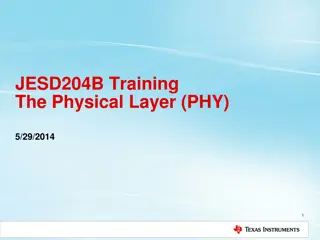Solving Physics Problems in Multibody Systems: Strategies and Motion Analysis
Understanding multibody systems in physics involves strategies like drawing free body diagrams, considering internal forces, and analyzing motion on inclines with rotated axes. By applying these methods, you can effectively solve problems involving forces, tensions, and accelerations in interconnected systems.
Download Presentation

Please find below an Image/Link to download the presentation.
The content on the website is provided AS IS for your information and personal use only. It may not be sold, licensed, or shared on other websites without obtaining consent from the author.If you encounter any issues during the download, it is possible that the publisher has removed the file from their server.
You are allowed to download the files provided on this website for personal or commercial use, subject to the condition that they are used lawfully. All files are the property of their respective owners.
The content on the website is provided AS IS for your information and personal use only. It may not be sold, licensed, or shared on other websites without obtaining consent from the author.
E N D
Presentation Transcript
Physics 1 Nov 9, 2017 P3 Challenge A 32 kg child is riding in a makeshift elevator for a tree house consisting of a rope that is tossed over a branch. If you assume that there is no friction between the rope and the branch, what is the tension in the rope when the child lifts the 4.5 kg elevator and himself at a constant speed by pulling down on the free end of the rope. Today s Objective: Multibody systems and friction on an incline Get out the More practice worksheet HMK for check.
Agenda, Assignment IB 2.2 Forces Agenda Multibody Systems P3 question Friction on an incline Multibody systems strategy Assignment: Friction on an incline strategy Multibody system example Multibodies and inclines (with friction) Friction on incline example Homework Review
Multibody system strategies - 1 Two methods to solve based on choice of bodies of interest. Method 1: Choose each body as a body of interest, and draw multiple FBDs Interaction force of object 1 on 2 is labeled F12and is located on m2 s FBD. Interaction force of object 2 on 1 is equal and opposite to F12 , labeled F21and located on m1 s FBD. External forces are located only on the FBD to which they are applied. Writing Fnet= ma equations for each FBD to generate a system of equations. The acceleration of the each body is equal to a because they are connected. But there may be sign differences because of the frames of reference used for each FBD. The mass in Fnet=ma for each body is the mass of the body of interest for each FBD.
Multibody system strategies -2 Method 2: Choose the whole system as the body of interest. Draw one FBD Interaction forces between the bodies become internal and are not included. External forces are still included. Writing Fnet,x= system moves right system moves left = ma equation Writing Fnet,y= up to the system down to the system = 0 equation. Note: the system direction may have turns within it due to pulleys Often both methods are used simultaneously to generate the necessary equations needed to solve a problem.
Motion on an incline If the motion of the body of interest is moving up or down an incline, rotate your axes. This greatly simplifies your calculations. The two directions become parallel (x) and perpendicular (y) Rotating axes makes the net force perpendicular to the incline = 0. Weight gets split into two components (Warning: sin and cos seem switched here) W = mg sin directed down the slope W = = mg cos mg cos directed into the incline directed into the incline 90 - g cos = a F Fnet net, ,= Up the slope = Up the slope down the slope = ma down the slope = ma g into the slope = 0 ( the reason you want to rotate axes) the reason you want to rotate axes) F Fnet net, , = to the slope = to the slope into the slope = 0 ( g sin = a
Motion on an incline with friction methods There are several possible conditions for friction on an incline. You can 90 - g cos = a push an object up an incline g pull an object up an incline g sin = a lower an object down an incline gently by pulling up or pushing up let gravity move the object down the incline naturally push an object down an incline faster than gravity or pull it down faster For each of these possibilities, you can have a static friction that is less than maximum, a static friction that is at maximum, or dynamic friction as it moves.
Multibody Sample Problem Given m1 = 1.25 kg , m2 = 0.500 kg, s = 0.35 and d = 0.25. Determine if the system will move or not. If it will move, determine the acceleration a and the tension in the cord. If it doesn t move, determine the tension in the cord.
Friction on incline Sample Problem What is the maximum mass the block can have without sliding down the incline if the coefficient of static friction between the block and the incline is 0.22? What is the maximum angle an incline can have for a mass to not slide if s = 0.22? What is the maximum mass the block can have without sliding down the incline if a cord with a maximum tension of 60 N is attached to a wall above the mass pa rallel to the 30 inline?
Exit Slip - Assignment When is it a good idea to rotate your axes for the frame of reference? What s Due on Tuesday Nov 14? (Pending assignments to complete.) Multibodies and Inclines Worksheet Continue studying for Unit 3 Test Nov 16, Multibody and Friction on incline quiz on Nov 17 What s Next? (How to prepare for the next day) Read p57-75























